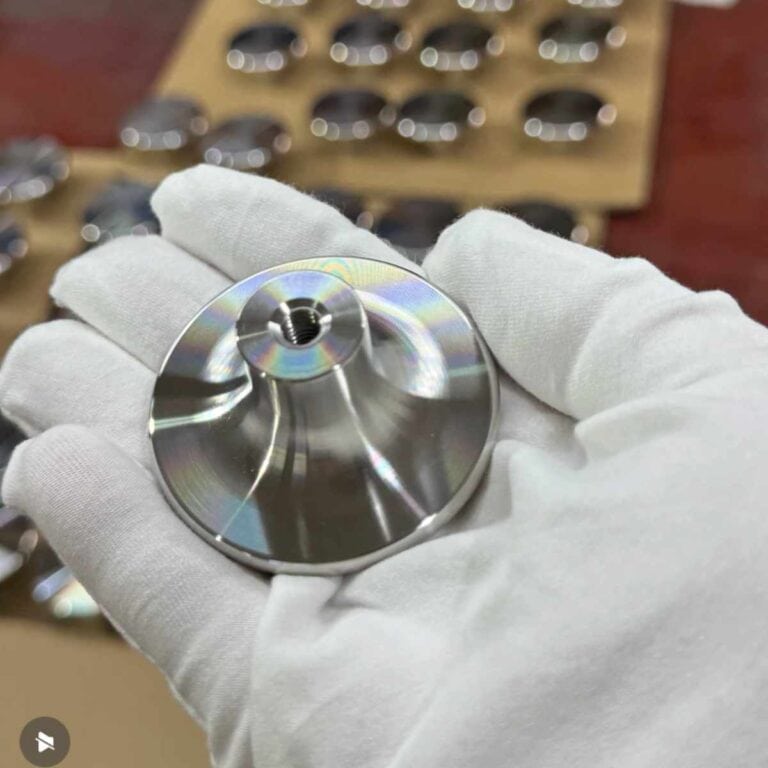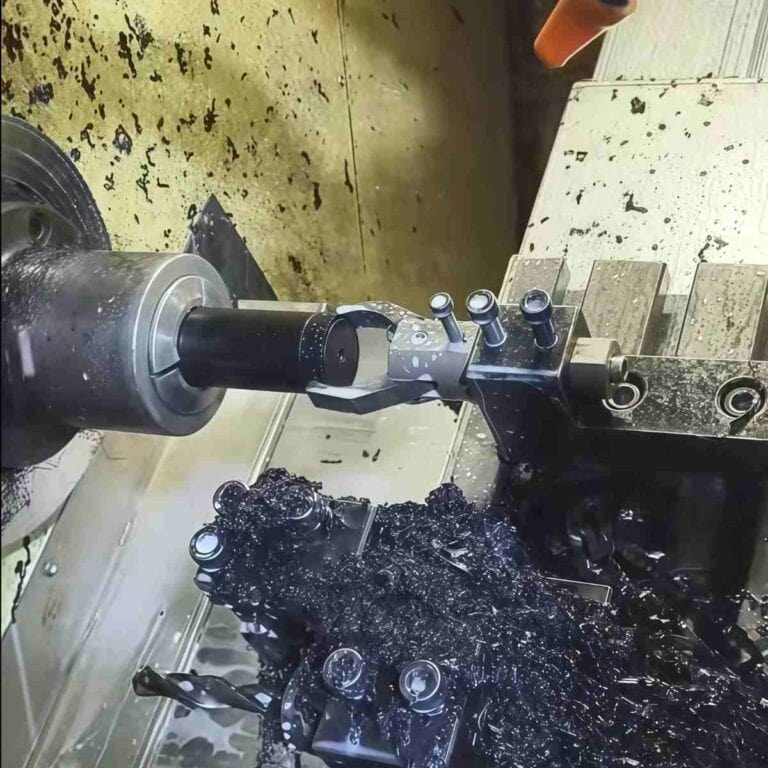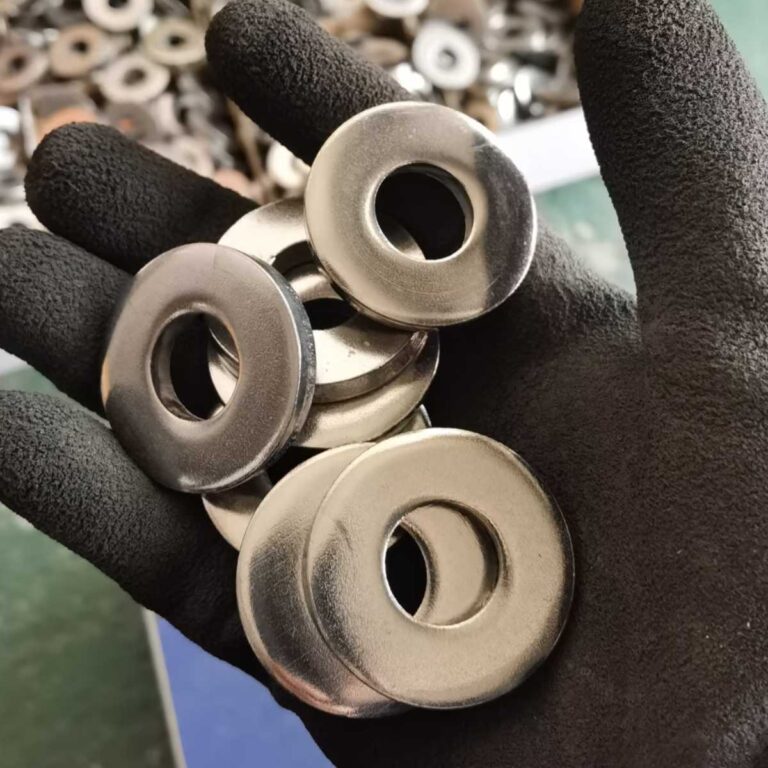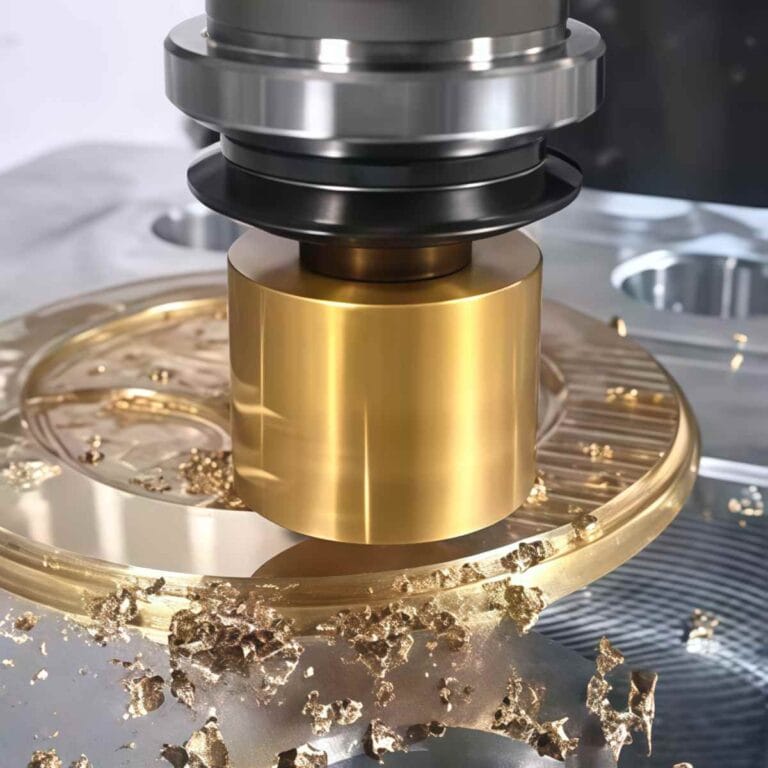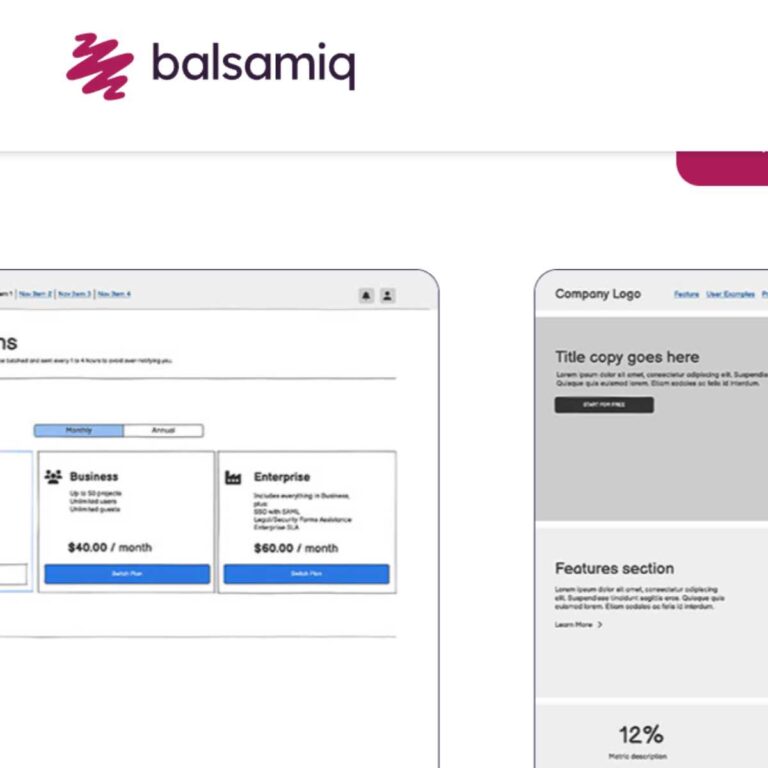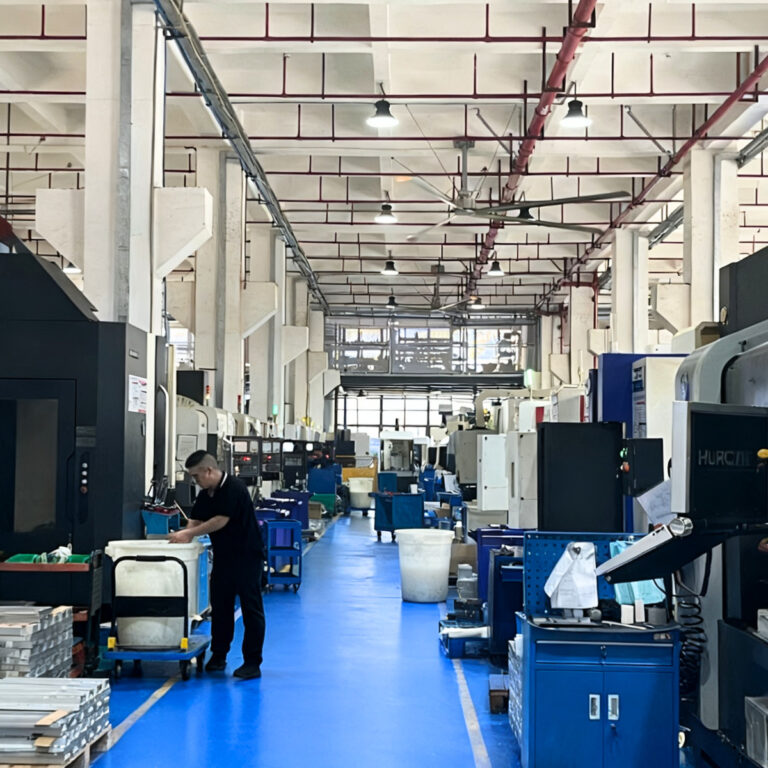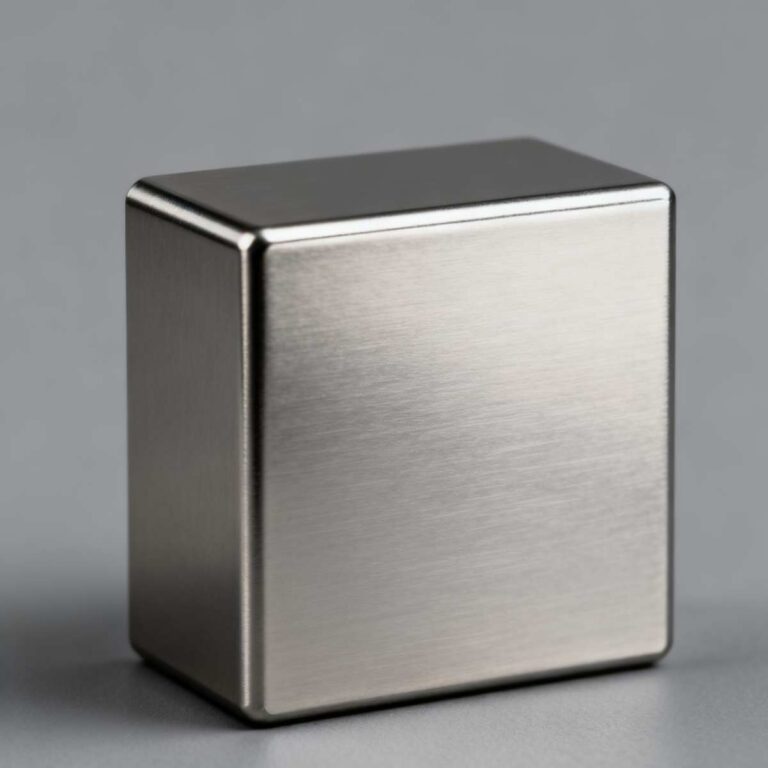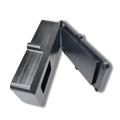Acrylic is recognized for its superior optical clarity, strength, and versatility, making it ideal for producing precise, high-quality components. When compared to materials like polycarbonate and ABS, acrylic offers distinct benefits, such as excellent UV resistance and high impact resistance, but also presents challenges in terms of brittleness and susceptibility to stress cracking. In this article, we will examine the key factors involved in Acrylic machining , including material properties, tolerance ranges (typically ±0.005” for standard parts), machining costs, and surface finishing techniques, to help you make an informed decision on the best material for your specific application.
What Is Acrylic
Acrylic (PMMA) is a transparent thermoplastic known for its clarity, impact resistance, and UV stability. With a density of 1.18 g/cm³ and tensile strength of 8,000-11,000 psi, it’s lightweight and durable. Compared to polycarbonate and ABS, acrylic offers superior transparency and UV resistance but is more brittle. While polycarbonate has better impact resistance, acrylic’s ability to be polished for a glass-like finish makes it ideal for applications where clarity is crucial.
Common Alternative Materials In Acrylic Machining
Acrylic is a popular choice in machining, but other materials like polycarbonate, ABS, and PETG also serve as strong alternatives, each offering specific advantages depending on the project requirements.
Polycarbonate: Known for its **high impact resistance** (up to 250 times stronger than acrylic), polycarbonate is ideal for applications requiring superior durability, such as protective covers or eyewear lenses.
ABS: A cost-effective material with good strength and impact resistance, ABS is commonly used for high-volume production and applications where cost is a primary factor, such as automotive parts or consumer electronics enclosures.
PETG: This material offers flexibility and is highly impact-resistant while remaining easy to fabricate. It is often used in applications that require some form of bending or shaping, such as packaging or signs.
Each material brings unique properties like impact resistance, cost-effectiveness, and flexibility, making them suitable for different machining applications.
Material Properties Of Acrylic
Density: 1.18 g/cm³, making acrylic significantly lighter than glass while maintaining strength, which is advantageous for lightweight applications.
Tensile Strength: Ranges from 8,000 to 11,000 psi, ensuring it can withstand stress without breaking, offering greater durability compared to glass.
UV Resistance: Acrylic boasts excellent UV resistance, with the ability to withstand prolonged exposure to sunlight, making it ideal for outdoor signage, automotive components, and medical equipment.
Impact Resistance: Though more impact-resistant than glass, acrylic is less resistant than polycarbonate, which means it is more prone to cracking under high impact or stress.
Acrylic’s combination of lightness, strength, and clarity makes it a popular choice for a wide range of applications, though care should be taken in high-impact situations where polycarbonate might be a more suitable alternative.
Comparison Of Properties With Other Materials
| Property | Acrylic | Polycarbonate | ABS |
| Density | 1.18 g/cm³ | 1.20 g/cm³ | 1.04 g/cm³ |
| Tensile Strength | 8,000 to 11,000 psi | 9,000 to 10,000 psi | 4,000 to 6,000 psi |
| UV Resistance | Excellent, ideal for outdoor use | Moderate, can yellow over time | Low, prone to degradation |
| Impact Resistance | Higher than glass, lower than PC | High, can withstand high impacts | Moderate, lower than acrylic |
| Light Transmission | Up to 92% | 88-90% | 87-90% |
| Transparency | Excellent optical clarity | Less clear than acrylic | Opaque or translucent |
| Temperature Resistance | 95°C (203°F) max | 135°C (275°F) max | 90°C (194°F) max |
| Polishability | Can be polished for a glass-like finish | Not as easily polished | Difficult to polish |
Common Acrylic Machining Methods
Common methods for acrylic machining include CNC milling, CNC turning, laser cutting, laser engraving, thermoforming, drilling, injection molding, and hot pressing. CNC milling ensures precision, while CNC turning is ideal for cylindrical parts. Laser cutting provides clean, precise edges, and laser engraving creates detailed patterns. Thermoforming and injection molding are great for shaping large or mass-produced components.
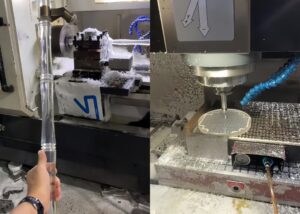
CNC Milling
CNC milling is a precise method for acrylic machining, ideal for intricate details and smooth finishes. To prevent cracking, selecting the right cutting tools is crucial. Carbide tools are preferred due to their durability, wear resistance, and ability to maintain sharp edges during high-speed operations. High-Speed Steel (HSS) tools are also used for less demanding tasks due to their cost-effectiveness.
To optimize results, use moderate spindle speeds and slower feed rates to minimize heat buildup and material distortion. Proper chip removal is essential to avoid re-cutting chips, which could lead to defects and tool wear.
CNC Turning
CNC turning is ideal for producing cylindrical acrylic parts like rods and tubes. The acrylic is mounted on a lathe, and the cutting tool shapes it to precise dimensions.
To avoid overheating and melting, adjust the feed rate to 0.005”–0.015” per revolution based on material thickness.
Using sharp carbide tools ensures clean cuts, and air or liquid cooling helps dissipate heat for smooth machining and material integrity.
Laser Cutting
In acrylic machining, laser cutting is a method of precisely cutting acrylic sheets, using a focused laser to create a smooth, polished edge. It is ideal for intricate designs and high-volume production.
For optimal results, power settings of 80-150 watts and cutting speeds of 1-10 mm/s are recommended, depending on the sheet thickness. Thinner sheets (up to 6mm) can be cut at higher speeds, while thicker sheets (10mm+) require slower speeds for clean cuts.
This technique generates minimal heat, preventing distortion and burn marks, and reducing the need for post-processing. An air assist system is often used to ensure clean edges and enhance cut quality.
Laser Engraving
Laser engraving is commonly used in acrylic machining to achieve precise and detailed etching of patterns, logos and text. The laser beam removes a thin layer of material to create intricate patterns without compromising the integrity of the acrylic.
By using a low-speed, high-power laser to ensure clear engraving and minimize material distortion. The typical engraving speed is around 300-500 mm/s, with a laser power setting of 30-60 watts, depending on the thickness of the acrylic. Laser engraving is widely used for applications like signage, awards, and custom decorative pieces, offering clean edges and high-definition details.
Thermoforming
Thermoforming involves heating the acrylic sheet to 160°C to 190°C to make it pliable. The softened acrylic is then formed using a mold, usually under vacuum or pressure, to create parts such as panels, signs and housings.
For best results, ensure that the sheet is heated evenly to prevent warping. Heating time is typically 2 to 5 minutes, depending on sheet thickness, and cooling is done with air or water. In acrylic processing, this technique is ideal for making large, complex shapes, and fine details can be achieved if the right mold and pressure control are used.
Drilling
Acrylic drilling requires high-speed tools, typically with a spindle speed of 15,000 to 20,000 RPM, to achieve precise holes while avoiding cracking or chipping. The feed rate is crucial for successful drilling, slower feed rates (0.005″ to 0.010″ per revolution) help prevent overheating and material distortion.
To avoid stress cracking, it’s essential to use a drill bit with a sharp, pointed tip, like carbide or HSS bits. A cooling method, such as air cooling or flood cooling, can be used to dissipate heat and improve the hole quality. Drilling is commonly employed in acrylic machining to create holes in items such as display cases, enclosures, and furniture parts.
Injection Molding
Casting molding is suitable for use in small production, uniform production, and high strength parts. After melting and melting, the mold is injected, and the shape of the mirror is displayed. Our engineering requires precise temperature control, power heating up to 250-300°C (482-572°F), mold temperature maintenance at 60-80°C (140-176°F).
Hot Pressing
The heating technology is capable of applying heat to plate materials, and also to molding large parts or shells. These various methods are very suitable for production, production, production and strength parts, and the amount of production in the subsequent period is small. Normally, the heating temperature is 150-180°C (302-356°F).
This technology available for high efficiency machining acrylic and large-scale hammer-shaped parts
Standard Tolerances For Acrylic
Acrylic machining offers precise tolerances, typically from ±0.005” to ±0.0005”. CNC milling and laser cutting can achieve tighter tolerances for detailed designs. Material hardness, tool selection, and machine calibration affect the final accuracy. Acrylic provides tighter tolerances than polycarbonate and ABS due to its rigidity. Most applications fall within tolerances of ±0.001” to ±0.005”.
Standard Tolerance Range For Acrylic Machining
In my experience machining acrylic, I have found that tolerances are relatively tight, with high-precision machining typically within the ±0.001-inch range. However, in most cases, a more common tolerance range for actual machining is ±0.005-inch to ±0.001-inch. The specific tolerance depends on the application, part geometry, and quality requirements. For complex designs, I make sure to optimize tooling and machining parameters to achieve the highest accuracy.
Factors Affecting Tolerances: Material Hardness, Tool Selection, Machine Calibration
The material’s hardness and rigidity, along with the choice of cutting tools, significantly affect the accuracy of the finished product. Calibration of the CNC machine also plays a crucial role in achieving desired tolerances. Tools with sharp cutting edges and proper calibration ensure precise cuts and minimal deviations.
Comparison Of Machining Tolerances With Other Materials
| Material | Machining Tolerance Range | Properties Impacting Tolerances | Comments |
| Acrylic | ±0.001” to ±0.005” | High rigidity and ease of machining | Ideal for high-precision parts requiring smooth finishes. |
| Polycarbonate | ±0.005” to ±0.01” | Superior impact resistance, more flexible, prone to deformation | Offers excellent impact resistance but less precision. |
| ABS | ±0.005” to ±0.01” | Lower impact resistance, cost-effective, machinable | Suitable for less demanding, cost-effective applications. |
Factors Affecting Acrylic Machining Costs
Acrylic machining costs are influenced by material grade, complexity, and long-term durability. Acrylic is costlier than ABS but more affordable than polycarbonate. Intricate designs and tight tolerances can increase costs. Despite higher initial costs, acrylic’s durability, clarity, and UV resistance offer significant long-term savings, making it a cost-effective option, especially for outdoor applications.
Material Costs
When considering the material costs of acrylic machining, acrylic is generally more expensive than basic materials like ABS but more affordable than high-performance plastics such as polycarbonate. The cost varies based on factors such as the grade of acrylic, thickness, and whether it is cast or extruded.
For example, cast acrylic tends to be priced higher than extruded acrylic due to its superior optical clarity and stability. The thickness of the material also plays a significant role—thicker acrylic sheets increase material costs. However, despite being pricier than ABS, acrylic offers a good balance of performance and cost, especially in applications requiring optical clarity.
Machining Costs
The machining costs of acrylic are influenced by several factors, including the complexity of the machining process, tool selection, machining time, and post-processing needs. While acrylic is relatively easy to machine due to its low hardness and good machinability, intricate designs and tight tolerances can drive up costs.
For example, achieving tight tolerances of ±0.001″ or finer requires more precise equipment and longer machining time, which increases labor costs.
Additionally, post-processing steps like polishing and surface finishing further add to the overall cost. However, despite these factors, acrylic’s ease of machining still makes it a cost-effective material for many applications.
Long-Term Cost Considerations: Durability And Performance
Acrylic offers significant long-term cost savings due to its durability, optical clarity, and UV resistance, especially for outdoor applications.
While the initial machining costs for acrylic may be higher compared to materials like ABS, its longevity and minimal maintenance requirements make it a more cost-effective option over time.
For instance, acrylic’s resistance to UV degradation and weathering ensures that it maintains its clarity and structural integrity for years, reducing the need for replacements or repairs. This makes it a particularly attractive choice for signage, outdoor displays, and other high-exposure applications where long-term performance is crucial.
Comparison Of Costs With Other Materials
When comparing acrylic machining costs to other materials, it’s important to consider both the initial investment and the long-term performance benefits. While acrylic machining is typically more affordable than high-performance plastics like polycarbonate, it tends to be pricier than materials such as ABS. The higher cost of acrylic machining is often attributed to its superior optical clarity, UV resistance, and durability, which are critical for applications where visibility and longevity are key. Acrylic’s ability to retain clarity and resist environmental damage over time makes it a cost-effective choice for projects where these qualities are essential, such as in signage, displays, and automotive components.
In contrast, ABS, while being more cost-effective in terms of material and machining, doesn’t provide the same level of optical performance or durability. Acrylic machining, though slightly higher in cost, is often the preferred choice when precise optical properties, like transparency and smooth finishes, are required. Additionally, acrylic’s resistance to UV light and its long-term stability, especially in outdoor environments, significantly reduce the need for replacements or maintenance, making it a more economical solution over time. Therefore, when selecting between materials for CNC machining, the choice of acrylic often provides better value, particularly for industries such as medical devices, electronics, and architectural components, where high precision and durability are non-negotiable.
Surface Treatments In Acrylic Machining
Surface treatments are essential for improving the appearance and functionality of acrylic parts. Methods like flame polishing, buffing, and chemical polishing are used to create smooth, glossy finishes and restore clarity. Compared to polycarbonate, acrylic requires gentler treatments due to its ease of polishing and high optical clarity. These qualities make acrylic ideal for applications where transparency and aesthetics are crucial, such as signage and lighting.
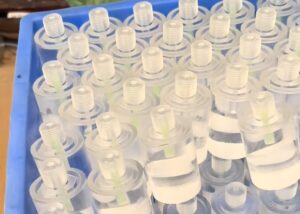
Surface Treatment Methods For Acrylic
Flame polishing: Flame polishing uses a focused flame to melt the acrylic’s surface slightly, creating a smooth, glossy finish. This method is particularly effective for parts that require a flawless, transparent finish. It eliminates tool marks and leaves acrylic with a glass-like surface, making it ideal for applications requiring optical clarity.
Mechanical buffing: Mechanical buffing involves using abrasive compounds and a soft cloth to remove surface imperfections, resulting in a high-gloss, clear finish. This technique is often employed in acrylic machining to refine the surface and improve the part’s overall appearance.
Chemical polishing : Chemical polishing is a method that uses a solvent vapor to slightly melt the acrylic surface, smoothing it without physical contact. This method is especially useful for complex geometries that are difficult to polish manually, achieving a uniform surface finish.
Each of these surface treatment methods plays a crucial role in enhancing the transparency, finish quality, and durability of acrylic parts. Acrylic machining operators must carefully select the appropriate technique based on the desired aesthetic, material thickness, and final application requirements.
Differences In Surface Treatment Methods With Other Materials
Compared to other materials like polycarbonate, acrylic machining generally requires more delicate surface treatments. While polycarbonate is known for its superior impact resistance, it often requires more aggressive methods like sanding or chemical treatments to enhance optical clarity. This is due to its tendency to develop surface imperfections during machining.
On the other hand, acrylic’s surface is more amenable to polishing, and its optical clarity can be easily restored with flame polishing, mechanical buffing, or chemical polishing. This makes acrylic machining a preferred choice for applications that demand high transparency, such as display cases and optical components, where maintaining a pristine surface is essential.
Acrylic’s surface treatment process also tends to be less labor-intensive and more cost-effective compared to polycarbonate.
Applications Of Acrylic
| Industry | Applications | Key Benefits |
| Automotive | Headlights, taillights, panels, windshields, indicator lights | Clarity, impact resistance, UV stability |
| Medical | Surgical trays, incubators, diagnostic equipment, cuvettes, blood filters | Optical clarity, ease of sterilization, impact resistance |
| Consumer Goods | Display cases, signage, furniture parts, phone cases | Transparency, durability, aesthetic flexibility |
| Architecture | Canopies, window panels, facades, decorative elements | UV stability, impact resistance, clarity |
| Electronics | LCD covers, touchscreen panels, protective enclosures | High transparency, durability, ease of machining |
| Marine | Boat windows, hatches, protective covers | UV resistance, impact resistance, weathering resistance |
FAQs
Is acrylic Easy To machine?
Acrylic is relatively easy to machine due to its low hardness and excellent machinability. With a tensile strength of 8,000-11,000 psi and a density of 1.18 g/cm³, acrylic can be precisely cut, drilled, and milled. Proper tooling, such as carbide or HSS cutters, ensures smooth finishes and reduces tool wear. While it’s easy to machine, careful attention to factors like feed rate, spindle speed, and cooling is crucial to prevent cracking or melting, especially for intricate designs.
What machine Is Best For Cutting Acrylic?
The best machine for cutting acrylic is a CNC milling machine or laser cutter. CNC milling provides high precision, ideal for intricate shapes, with the ability to maintain tight tolerances of ±0.001”. Laser cutting, on the other hand, offers clean, polished edges and is excellent for detailed designs. Both methods minimize heat buildup, preventing acrylic from cracking or warping. For larger batches, laser cutting is more efficient, while CNC milling is preferred for complex, high-precision parts.
Is Clear Acrylic As Clear As Glass?
Clear acrylic is highly transparent, with light transmission up to 92%, making it almost as clear as glass. However, its refractive index of 1.49 is slightly lower than glass, which can result in minor visual distortion. Despite this, acrylic’s superior impact resistance and lighter weight make it a practical alternative to glass in many applications. While not identical in optical clarity, acrylic is often preferred for applications where durability and safety are critical, such as in windows, display cases, and signage.
How long Does Acrylic Plastic last?
Acrylic plastic is highly durable, with a typical lifespan of 10 to 30 years, depending on the environment. Its UV resistance helps prevent yellowing and degradation when exposed to sunlight. In outdoor applications, acrylic can maintain its clarity and strength for decades, making it ideal for signs, windows, and displays. Proper maintenance, such as regular cleaning, can further extend its lifespan. However, acrylic can be prone to scratching, which may affect its aesthetic quality over time.
Can I Use CNC Router Machine For Transparent Acrylic?
Yes, a CNC router machine is suitable for cutting transparent acrylic. It offers high precision, ensuring smooth edges and accurate dimensions. When using a CNC router for acrylic, it’s essential to select the right cutting tools, such as carbide bits, and optimize parameters like spindle speed and feed rate to prevent cracking or heat buildup. Additionally, using proper clamping and cooling techniques can help achieve clean cuts and preserve the material’s transparency, making CNC routers an effective choice for acrylic machining.
Conclusion
In conclusion, CNC machining provides excellent precision and consistency when working with acrylic, making it the go-to method for high-quality results. Acrylic’s superior optical clarity, combined with its versatility and ease of machining, makes it the ideal material for projects requiring transparency, durability, and a polished finish. Whether it’s for medical devices, automotive components, or eye-catching signage, acrylic is a material that stands out. If you’re considering acrylic for your next project, feel free to reach out – I’m happy to share insights on how CNC machining can help bring your vision to life with unmatched precision!

